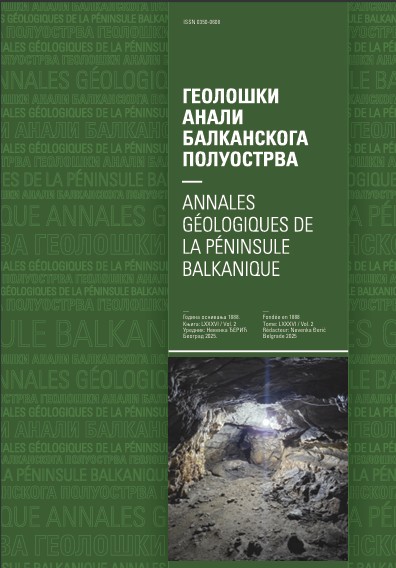A first attempt at a provenance study in the Jadar block (Serbia) by means of U-Pb zircon geochronology
Abstract
U-Pb geochronology of zircon grains retrieved from magmatic rocks intruding the Jadar block terrane in the central Balkans is used here to add new constraints on the terrane accretion processes and the provenance of crustal sources of this potentially exotic crustal block. Using an unorthodox approach, we analyzed zircons extracted from the products of Cenozoic (Cer and Boranja granitoid massifs) and Triassic magmatism (Bobija andesitic tuff - Pietra Verde). In fourteen samples of granites and epiclastites, we analyzed about 600 grains, and of these, about 30-40% were derived from the basement and were used further for the geological interpretation. Most samples show a similar Precambrian and Paleozoic age spectrum, including ubiquitous Neoproterozoic and well-defined Silurian-Ordovician populations. Only a few older zircons are present, composing minor populations at c. 1.2 Ga and 3.2 Ga. The younger zircons represent a ubiquitous Triassic population that is the strongest in all samples. This age population is most likely associated with local Permo-Triassic magmatism generated due to the opening of the Neotethys. In contrast to the magmatic rocks of Boranja and Bobija, the zircon age spectrum of the Cer polyphase pluton shows a strong Carboniferous peak, indicating a potentially important link to the Variscan margin of Eurasia. This supports opposing interpretations that either this part of the Jadar block terrane represents a southern continuation of the “Bukkium” and Sana-Una terranes comprising displaced fragments of the southern European Variscan foreland, or, more likely, that it has an Adria affinity and that these zircons are derived from Cretaceous sediments of the Sava Zone, i.e., the suture that separates European and Adriatic domains, which were assimilated during the intrusion of the Cer granitic magmas.
Copyright (c) 2023 Geološki anali Balkanskoga poluostrva

This work is licensed under a Creative Commons Attribution 4.0 International License.










